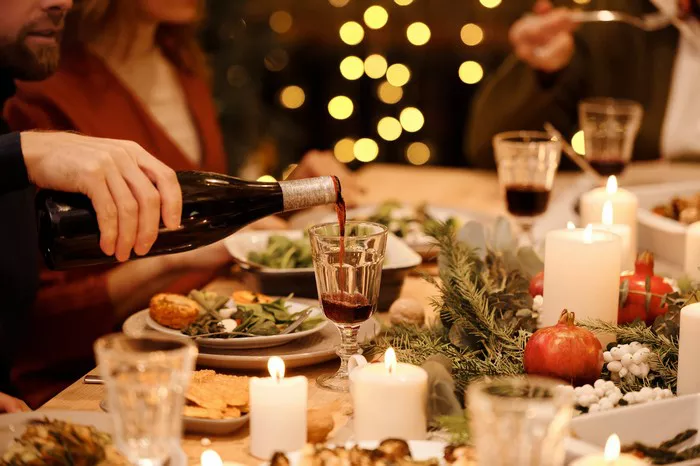Champagne wine, the epitome of luxury and celebration, has a long history that dates back centuries. This iconic sparkling wine, with its delicate bubbles and crisp taste, has been enjoyed by royalty and enthusiasts alike. In this comprehensive guide, we will embark on a journey into the world of champagne wine, revealing the intricate process of its creation, from the vineyards to the bottle, while uncovering the traditions and techniques that make it a symbol of elegance and festivity.
The Essence of Champagne Wine
Champagne wine is more than a beverage; it is a symbol of luxury, celebration, and sophistication. Known for its distinctive effervescence, Champagne has become synonymous with toasts and special moments. Understanding how this exquisite wine is crafted provides a deeper appreciation for its unique qualities.
Origins of Champagne Wine
Champagne wine’s history can be traced back to the Champagne region in France. It was monks in medieval France who first cultivated the vineyards and discovered the art of creating sparkling wine. Champagne wine’s reputation grew over the centuries, and it soon became associated with nobility and celebrations.
The Champagne Vineyards
Champagne wine’s journey begins in the vineyards. The grapes used in Champagne production must adhere to strict regulations. Chardonnay, Pinot Noir, and Pinot Meunier are the primary grape varieties used, each contributing to the wine’s complexity. The vineyards of the Champagne region are carefully tended, ensuring the grapes develop the unique characteristics essential for exceptional wine.
Harvesting the Grapes
The grapes used for Champagne wine are handpicked during the annual grape harvest, which typically occurs between late August and early September. Hand harvesting ensures that only the healthiest clusters are selected, as they will be the foundation of the wine’s quality.
Pressing and Fermentation
Once harvested, the grapes undergo a gentle pressing to extract their juice. The juice, including the grape skins, is then fermented. The primary fermentation can take place in stainless steel tanks or wooden barrels, depending on the producer’s preference. This initial fermentation results in still wine, which serves as the foundation for Champagne.
Assemblage: The Art of Blending
One of the hallmarks of Champagne wine production is the art of blending. Champagne is often crafted from a combination of grape varieties, vineyards, and vintages. This meticulous blending, known as assemblage, allows winemakers to create a consistent house style and maintain the signature taste of the Champagne.
Tirage: The Second Fermentation
After the still wine is blended, it is bottled and a carefully measured mixture of sugar and yeast is added. This process, known as tirage, initiates the second fermentation. As the yeast consumes the added sugar, it produces carbon dioxide, which becomes trapped in the bottle, creating the characteristic bubbles of Champagne.
Aging on Lees
Following the second fermentation, the bottles are stored horizontally in underground cellars. Here, they rest on their lees, the dead yeast cells from the fermentation. This aging process, known as sur lie aging, can last for a minimum of 15 months, and in the case of vintage Champagnes, several years. It imparts complexity, richness, and a distinctive biscuity aroma to the wine.
Riddling: Preparing for Disgorgement
Before Champagne can be enjoyed, the bottles must undergo riddling, a process that involves gradually tilting and rotating the bottles to encourage the yeast sediment to settle in the bottle’s neck. Riddling can be done manually, but many producers now use automated gyropalettes.
Disgorgement and Dosage
Once the yeast sediment is concentrated in the bottle neck, it’s time for disgorgement. The bottle’s neck is frozen, trapping the sediment in a plug of ice. The bottle is then opened, and the pressure expels the plug, leaving the clear wine behind. A small amount of wine and sugar, known as the dosage, is added to adjust the Champagne’s sweetness level.
Corking and Caging
With the dosage added, the bottle is corked with a Champagne cork and secured with a wire cage. The pressure inside the bottle is significant, and the cage ensures that the cork remains in place during transport and storage.
Aging in the Cellars
Champagne wines continue to age in the producer’s cellars after disgorgement, and the length of this aging can vary. Non-vintage Champagnes usually age for a minimum of 15 months from the time of tirage, while vintage Champagnes may age for several years.
Champagne Regions
While Champagne wine originates from the Champagne region in France, other countries and regions have begun to produce sparkling wines using the traditional Champagne method. These wines are referred to as “sparkling wine” rather than Champagne, as Champagne is a protected designation of origin. Some notable sparkling wine regions include the Napa Valley in California, the Penedès in Spain, and the Trentino-Alto Adige region in Italy.
Pairing Champagne
Champagne’s versatility makes it an ideal accompaniment for various dishes. It pairs wonderfully with oysters, caviar, seafood, and light appetizers. Its effervescence and acidity also make it an excellent palate cleanser between courses in a multicourse meal.
Collectible and Prestigious Bottles
Champagne is celebrated not only for its taste but also for the prestige and luxury it represents. Collectors and enthusiasts seek rare and prestigious bottles, often from renowned Champagne houses and prestigious vintages. These bottles can become valuable treasures for connoisseurs.
Responsibility and Enjoyment
As with any fine wine, enjoying Champagne should be done responsibly and in moderation. It’s a wine that can elevate special moments and add a touch of elegance to celebrations.
Conclusion:
Champagne wine is a symbol of elegance, tradition, and celebration. Its intricate journey from the vineyard to the bottle is a testament to the craftsmanship and dedication of winemakers. With its exquisite taste and delicate bubbles, Champagne enriches moments of joy and signifies the artistry of winemaking.


